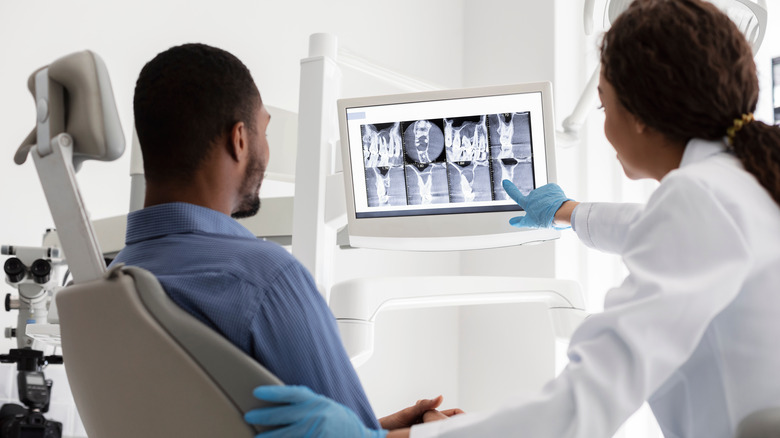This Is What Happens When A Cavity Goes Untreated
If you've had access to popular media in the last 20 years, you've probably seen the tired trope of people fearing the dentist. Movies and television are known to exaggerate, of course. Even if a trip to the dentist doesn't leave you shaking in your shoes, it's probably not your first choice when you're looking for things to do.
Even people who need to see the dentist tend to avoid booking an appointment, though the American Dental Association found that the reason varied depending on a person's income level, age, and whether or not they had health insurance. The reasons varied from a lack of insurance, inability to find a convenient time to go or a location near them, or — true to the trope — fear of the dentist.
And, for a time at least, these reasons were more than enough to justify staying out of the dentist's chair. Once a cavity develops, however, there are more reasons to go to the dentist than to avoid them, especially when you know what happens to an untreated cavity.
Untreated cavities can lead to huge problems
Untreated cavities pose serious health risks, and the U.S. Centers for Disease Control and Prevention (CDC) lists them as "one of the greatest unmet health treatment needs" in the country. The CDC goes on to say that over half of children between the ages of 6-8 develop a cavity, with children in lower-income homes being twice as likely to develop them as children from homes with higher incomes.
Cavities are far from harmless childhood issues. Rockford Health System lays out all the possible complications that can arise when cavities are left untreated. In the best-case scenario, a person may experience bad breath as bacteria gathers in the cavity crevice.
From there, however, things get much worse. Untreated cavities can lead to tooth loss or an abscess. The Mayo Clinic defines these as pockets of pus in the teeth or gums caused by bacterial infections. Those caused by untreated cavities are specifically referred to as periapical tooth abscesses and can lead to symptoms like fever, swelling of the face, pus in the mouth in the vent of a rupture, and difficulty breathing or swallowing.


